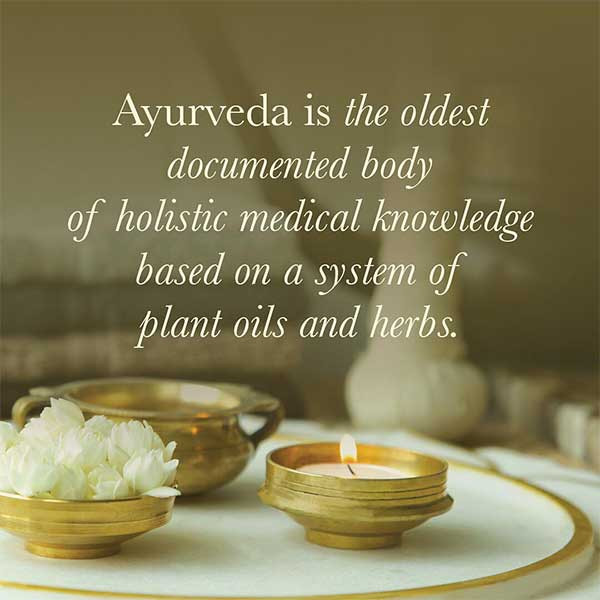While the term “hair spa” might sound like a recent trend, the essence of nourishing hair treatments has deep roots in ancient practices. In fact, Ayurvedic traditions have long championed hair care rituals designed to strengthen and beautify hair using nature’s bounty.
Ancient Vedic texts describe women enriching their hair with fragrant coconut oil infused with jasmine, rose, or sandalwood. This age-old practice of hair oiling is a cornerstone of an authentic Ayurvedic Hair Spa experience, readily achievable in the comfort of your home.
This guide will delve into the world of Ayurvedic hair spas, exploring everything you need to know to rejuvenate your hair naturally. Let’s begin by understanding the fundamentals.
What is an Ayurvedic Hair Spa?
An Ayurvedic hair spa is a holistic treatment inspired by ancient Indian wellness principles, focusing on nourishing and revitalizing hair from root to tip. Unlike modern salon hair spas, an Ayurvedic approach emphasizes natural ingredients and time-tested techniques to promote long-term hair health and balance.
A typical Ayurvedic hair spa encompasses several key steps: therapeutic oil massage, gentle herbal shampoo cleansing, deep conditioning with a natural hair mask, and a final revitalizing conditioning. These steps work synergistically to restore lost moisture and shine, combating the damaging effects of pollution and dryness, common concerns for hair health.
Think of an Ayurvedic hair spa as a “hair rejuvenation therapy”. It goes beyond surface-level conditioning, aiming to replenish vital oils and hydration to the hair roots, fostering stronger, healthier hair growth from within.
Beyond its profound benefits for hair, an Ayurvedic hair spa is also a deeply relaxing and stress-relieving experience. Ayurveda recognizes that the scalp is home to numerous vital energy points known as marma points. Scalp massage, a crucial part of the spa, stimulates these points, encouraging the release of serotonin and melatonin, hormones associated with calmness and well-being. This results in a soothing effect on both mind and body.
Top 5 Benefits of Ayurvedic Hair Spa
Just as a facial cleanses and revitalizes the skin to unveil its natural radiance, an Ayurvedic hair spa unlocks the inherent luster of your hair. Incorporating a monthly Ayurvedic hair spa into your routine is highly recommended to deeply nourish the scalp and fortify hair roots. Let’s explore the primary advantages of regular Ayurvedic hair spa treatments.
1. Strengthens Hair Follicles Naturally
The strength and vitality of your hair strands are fundamentally determined by the health of your hair roots, or follicles. These follicles are the very foundation of your hair. Well-nourished follicles translate directly to stronger, healthier, and more vibrant hair.
Unfortunately, various modern stressors, including inadequate nutrition, the overuse of harsh chemical-laden hair products, and environmental pollutants, can gradually weaken hair roots.
An Ayurvedic hair spa addresses this concern directly. The process of massaging herbal hair oil into the scalp deeply moisturizes the hair follicles. The application of a specifically chosen Ayurvedic hair mask further amplifies these benefits. Therefore, adopting a monthly or bi-weekly Ayurvedic hair spa ritual is an excellent practice to maintain healthy and robust hair roots, the key to sustained hair strength.
Complement this external nourishment with a balanced diet rich in essential nutrients and a daily handful of nuts, and you’ll be well on your way to cultivating strong and resilient hair follicles.
2. Repairs and Reverses Hair Damage
While environmental pollution and excessive sun exposure are significant contributors to hair damage, the reality is that hair can experience continuous damage even indoors, particularly in climate-controlled environments. Hair dryness is often an early indicator of underlying damage, and the most effective solution lies in providing intense, natural conditioning.
Regular Ayurvedic hair spa treatments are designed to address this. They not only deeply moisturize the hair shaft but also enhance its ability to retain moisture over time. As hair recovers from accumulated damage, its overall texture and appearance improve noticeably, becoming smoother, softer, and more manageable.
3. Balances Scalp Oil Production Naturally
Maintaining a healthy balance of natural oils produced by the sebaceous glands in your scalp is crucial for healthy hair growth, regardless of whether you experience a dry or oily scalp. An imbalance in either direction can lead to problems. An excessively oily scalp attracts dirt and impurities, while a dry scalp can result in itching and dandruff.
An Ayurvedic hair spa treatment is personalized to address your specific scalp concerns. For instance, if you have a dry scalp, incorporating warming essential oils like Cinnamon or Lavender into your massage oil can be exceptionally beneficial. For an oily scalp, refreshing and balancing essential oils such as Peppermint or Tea Tree can be added to the massage oil to help regulate sebum production.
4. Boosts Scalp Circulation and Reduces Stress
In many cultures, scalp massage is a cherished practice shared between loved ones – partners, parents, and children alike. This simple act carries profound benefits, effectively reducing stress, promoting restful sleep, and stimulating healthy hair growth.
Head massage, a fundamental component of an Ayurvedic hair spa treatment, is renowned for its ability to enhance blood circulation to the scalp. Improved circulation ensures that hair follicles receive a greater supply of oxygen and essential nutrients. This revitalization of the scalp encourages healthy hair growth and overall scalp health.
5. Deeply Cleanses Scalp and Hair Roots
Over time, dirt, pollutants, and product buildup can accumulate deep within the pores of your scalp. These trapped impurities are detrimental to hair health, hindering hair growth and potentially leading to scalp infections.
Steaming is an integral step in an Ayurvedic hair spa treatment, typically performed after oiling (or after applying a leave-in conditioner). Steaming gently opens up the pores, facilitating the removal of accumulated debris and impurities from the scalp. As pores become unclogged, they become more receptive to absorbing nutrients, further enhancing hair growth and scalp health.
Now that we’ve explored the numerous benefits of incorporating regular Ayurvedic hair spa treatments into your hair care routine, let’s learn how to easily perform one at home. While salon treatments are available, many people prefer the DIY approach for several compelling reasons:
- Cost-Effectiveness: Home-based Ayurvedic hair spas are significantly more affordable than salon treatments.
- Natural and Pure Ingredients: You have complete control over the ingredients, allowing you to choose all-natural and organic products, minimizing exposure to harsh chemicals.
- Extended Treatment Time: You can leave nourishing oils and hair masks on for longer durations, even overnight, for intensified benefits.
- Customized Homemade Masks: You can easily create personalized hair masks using fresh, natural ingredients tailored to your specific hair needs.
How to Do an Ayurvedic Hair Spa at Home?
Follow these straightforward four steps to indulge in a revitalizing Ayurvedic hair spa experience in the comfort of your home. Pamper your hair naturally without spending excessive time or money.
1. Ayurvedic Hair Oiling (Shiro Abhyanga)
Salon hair spa treatments often omit the crucial step of oiling, a cornerstone of Ayurvedic hair nourishment. However, when performing an Ayurvedic hair spa at home, there’s no reason to miss out on the myriad benefits of hair oiling, a practice known as Shiro Abhyanga in Ayurveda.
According to Ayurvedic principles, herbal oils are exceptionally beneficial for hair health. This centuries-old ritual nourishes hair cells, revitalizes dry hair, stimulates scalp circulation, and promotes healthy hair growth. Ayurvedic oils also naturally cleanse and detoxify the scalp and hair roots, removing impurities and promoting balance.
The selection of your Ayurvedic hair oil should be guided by your specific hair concerns and dosha type (though for home spa, focusing on hair concerns is sufficient). Here are some highly recommended Ayurvedic hair oils: Bringadi Oil (for overall hair health and hair fall), Coconut Oil (for moisturizing and cooling), Sesame Oil (for warming and strengthening), and Almond Oil (for nourishment and shine).
Regardless of the Ayurvedic hair oil you choose, the application process remains consistent. Warm a small amount of oil gently. Take it onto your palms and apply it meticulously all over your scalp. Then, using your fingertips, massage the oil into your scalp in circular motions, working your way from the roots to the tips of your hair.
Allow the oil to remain on your hair for at least 20 minutes. For deeper nourishment, you can even leave it on overnight. Afterward, cleanse your hair using a mild, natural hair cleanser and lukewarm water.
If incorporating Neem oil (known for its potent antibacterial and antifungal properties), dilute it by combining equal parts Neem oil with a suitable carrier oil like coconut or almond oil. When using essential oils for added benefits, add only 2-3 drops of essential oil to a tablespoon of carrier oil.
2. Steaming (Swedana)
Steaming your hair following oil application, a process known as Swedana in Ayurveda, allows the nourishing oil to penetrate deeply into the hair shaft and scalp. This enhanced penetration significantly improves the absorption of the oil’s beneficial nutrients. You don’t need specialized equipment for steaming your hair at home. You can easily provide a steam treatment using these simple steps:
- Heat water in a suitable container until it’s warm and steaming, but not boiling.
- Immerse a clean towel or cotton cloth in the warm water. Wring out any excess water, ensuring the towel is damp but not dripping.
- Wrap the warm, damp towel securely around your head, covering all of your hair. The gentle heat will open up the hair pores and follicles, facilitating deeper oil penetration and nourishment. Allow the warm towel to remain on your hair for approximately 15 to 20 minutes. You can repeat this process once or twice as the towel cools down to prolong the steaming effect.
3. Gentle Wash and Condition (Prakshalana and Kesha Samskara)
After steaming, the next step is to cleanse your hair using a mild, natural hair cleanser (Prakshalana). It’s crucial to use only lukewarm water for this step. Washing your hair with hot water can weaken the hair roots, strip away natural oils, and even contribute to dandruff or an itchy scalp.
Following cleansing, apply a natural hair conditioner (Kesha Samskara) to further nourish and detangle your hair. Leave the conditioner on for a few minutes as directed on the product label, and then rinse it off thoroughly with lukewarm water. After washing, allow your hair to air dry naturally. Avoid using a blow dryer or other heat styling tools, as heat can negate the benefits of the spa treatment and potentially damage your hair.
4. Ayurvedic Hair Mask Application (Shiro Lepa)
The final and arguably most important step in an Ayurvedic hair spa is the application of a nourishing hair mask, known as Shiro Lepa in Ayurveda. An ideal Ayurvedic hair mask is carefully chosen or prepared to address the specific needs and imbalances of your hair and scalp. However, the primary function of any Ayurvedic hair mask is to deeply hydrate and lock in moisture and vital nutrients into the hair shaft, providing intense conditioning and repair.
You can easily prepare your own effective Ayurvedic hair masks at home using natural ingredients to maximize their benefits. According to Ayurveda, a hair mask, or Shiro Lepa, is considered one of the most potent treatments for both hair and scalp health. Here are a few popular and effective Ayurvedic hair mask recipes that you can easily experiment with:
1. Amla, Reetha, and Shikakai Hair Mask
This classic Ayurvedic combination is renowned for its cleansing, strengthening, and revitalizing properties. Mix two tablespoons of Amla juice (or powder), one tablespoon of Reetha powder, one tablespoon of Shikakai powder, and two tablespoons of Rose Water to form a smooth paste. Apply this paste evenly all over your hair and scalp. Allow it to sit for 30 minutes before washing it off with lukewarm water. This mask is particularly effective for restoring natural hair luster, preventing dandruff, and promoting scalp health.
2. Coconut Milk and Hibiscus Hair Mask
This mask provides deep hydration and promotes hair growth. Combine four tablespoons of fresh Coconut milk, four tablespoons of crushed Hibiscus petals (or powder), and three tablespoons of Honey to create a thick paste. Apply the paste generously to your hair and scalp. Leave it on for 30 to 40 minutes before rinsing thoroughly with lukewarm water.
3. Aloe Vera and Almond Oil Mask
Aloe Vera is celebrated for its soothing and restorative properties, promoting strong and healthy hair. To use Aloe Vera as a hair mask, you can apply fresh Aloe Vera gel directly to your scalp and hair. For added nourishment, you can mix Aloe Vera gel with Almond oil or Coconut oil in equal proportions. Apply the mixture to your hair and scalp, and rinse it off after 20 minutes.
You can also personalize your Ayurvedic hair masks by incorporating other hair-nourishing natural ingredients such as Avocado, Yogurt (Curd), Eggs, Apple Cider Vinegar, Honey, Onion juice, and even ripe Bananas, depending on your specific hair needs and concerns.
Conclusion
Ayurvedic hair spa treatments are a valuable investment in maintaining a healthy scalp and beautifully nourished hair. For optimal results, aim to incorporate an Ayurvedic hair spa into your routine at least once a month. This guide provides a simple, effective 4-step process for performing an Ayurvedic hair spa at home, allowing you to experience the benefits of this ancient hair therapy without the expense of salon treatments. By using only natural products in your Ayurvedic hair spa, you can even indulge in this revitalizing ritual once every 15 days to achieve even glossier, healthier hair and reduce hair fall naturally.
To further enhance the benefits of your monthly Ayurvedic hair spa, follow these simple yet effective tips for post-treatment hair care:
- Minimize the use of heat styling appliances like blow dryers, straighteners, and curling irons.
- Avoid tying your hair too tightly, as excessive tension can lead to hair breakage and damage. Opt for loose hairstyles.
- Protect your hair from harsh sun exposure by covering it with a wide-brimmed hat or a light cotton scarf when outdoors.
- Transition to natural and organic hair care products, minimizing or eliminating the use of chemical-laden shampoos, conditioners, and styling aids.
- Nourish your hair from within by including protein-rich foods and iron-rich foods in your diet. Make it a habit to eat a handful of nuts and seeds daily for essential fatty acids and vitamins.
- If you choose to color your hair, opt for natural hair dyes and herbal hair colors that are gentler on your hair and scalp.
- Limit your intake of refined oils, excessive salt, processed starches, and sugary foods, as these can weaken hair roots and negatively impact overall hair health.






